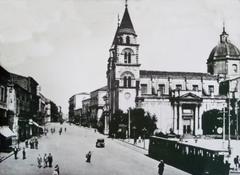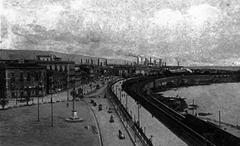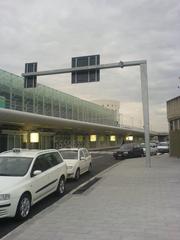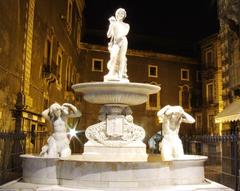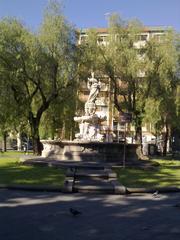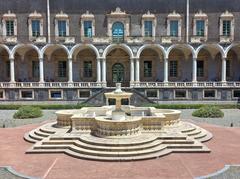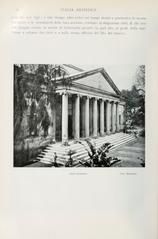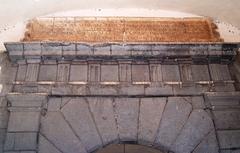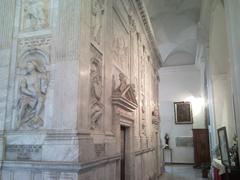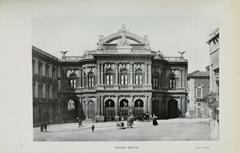Visiting Hours, Tickets, and Historical Significance of Castello Ursino in Catania
Date: 17/07/2024
Introduction
Welcome to a comprehensive guide on visiting Castello Ursino, an iconic medieval fortress in Catania, Sicily. Constructed between 1239 and 1250 by Emperor Frederick II of the Holy Roman Empire, this historic monument stands as a testament to the region’s vibrant and complex history (Sicily Tourism). Castello Ursino is not just a relic of the past; it has evolved through various roles—from a royal residence and military stronghold to a prison and now a museum. This guide aims to provide a detailed overview of the castle’s rich history, architectural significance, and essential visitor information, including visiting hours, ticket prices, and nearby attractions. Whether you are a history enthusiast, an architecture aficionado, or simply planning your next travel adventure, this guide will help you make the most of your visit to Castello Ursino.
Table of Contents
- Introduction
- Historical Significance
- Architectural Features
- Visitor Information
- Nearby Attractions
- FAQ
- Significance in Modern Times
- Conclusion
Historical Significance
Origins and Construction
Castello Ursino, located in Catania, Sicily, is a remarkable example of medieval military architecture. The castle was constructed between 1239 and 1250 by Emperor Frederick II of the Holy Roman Empire. The primary purpose of the castle was to serve as a defensive fortress and a symbol of imperial power in Sicily. The castle’s design reflects the architectural style of the Hohenstaufen dynasty, characterized by its robust and austere structure. The strategic location of Castello Ursino, near the coast, allowed it to serve as a formidable defense against potential invaders (Sicily Tourism).
Role in the Sicilian Vespers
The castle played a significant role during the Sicilian Vespers, a rebellion that began in 1282 against the rule of the Angevin King Charles I of Naples. The uprising led to the expulsion of the French from Sicily and the establishment of the Aragonese rule. Castello Ursino became a key stronghold for the Aragonese forces, who used it as a base to consolidate their power in the region. The castle’s strategic importance during this period highlights its role in the broader political and military history of Sicily (History of Sicily).
Transformation into a Royal Residence
In the 14th century, Castello Ursino underwent significant transformations under the rule of the Aragonese monarchs. King Frederick III of Sicily, also known as Frederick the Simple, chose the castle as his royal residence. During this period, the castle was modified to accommodate the needs of the royal court. The addition of residential quarters, grand halls, and decorative elements marked a shift from its purely military function to a more ceremonial and administrative role. This transformation reflects the changing political landscape of Sicily and the castle’s adaptation to new functions (Catania History).
Earthquake and Lava Flow
One of the most dramatic events in the history of Castello Ursino was the eruption of Mount Etna in 1669. The volcanic eruption caused a massive lava flow that reached the city of Catania and surrounded the castle. Remarkably, the castle withstood the lava flow, which altered the landscape around it. The lava flow extended the coastline, leaving the castle further inland. This natural disaster significantly impacted the castle’s surroundings but also demonstrated its resilience and robust construction (Etna Eruption).
Use as a Prison
In the 17th and 18th centuries, Castello Ursino was repurposed as a prison. The castle’s thick walls and secure structure made it an ideal location for detaining prisoners. This period in the castle’s history is marked by its use as a place of confinement and punishment. The transformation of the castle into a prison reflects the changing needs and priorities of the authorities in Catania during this time. The use of the castle as a prison continued until the early 19th century (Catania Prisons).
Restoration and Museum Conversion
In the 20th century, Castello Ursino underwent extensive restoration efforts to preserve its historical and architectural significance. The restoration work aimed to repair the damage caused by centuries of use and natural disasters. In 1934, the castle was converted into a museum, known as the Museo Civico Castello Ursino. The museum houses a diverse collection of artifacts, including ancient Greek and Roman sculptures, medieval weapons, and Renaissance paintings. The conversion of the castle into a museum has allowed it to serve as a cultural and educational resource for visitors and scholars alike (Museo Civico).
Architectural Features
Castello Ursino is renowned for its distinctive architectural features, which reflect its medieval origins and subsequent modifications. The castle is built in a square plan with four corner towers and a central courtyard. The walls are constructed from lava stone, giving the castle its characteristic dark appearance. The main entrance is adorned with a grand portal, featuring the coat of arms of the Hohenstaufen dynasty. Inside, visitors can explore the various rooms and halls, each with its unique historical and architectural significance. The castle’s design and construction techniques provide valuable insights into medieval architecture in Sicily (Medieval Architecture).
Visitor Information
Visiting Hours and Tickets
Planning your visit to Castello Ursino? Here are the essential details:
- Visiting Hours: The castle is typically open from 9:00 AM to 7:00 PM, but hours may vary depending on the season or special events.
- Tickets: General admission tickets cost around €6, with discounts available for students, seniors, and groups. It’s advisable to check the official website for the most up-to-date information and to purchase tickets in advance.
Travel Tips
- Best Time to Visit: Spring and autumn are ideal times to visit Catania, as the weather is pleasant and the tourist crowds are smaller.
- Guided Tours: Consider booking a guided tour to gain deeper insights into the castle’s history and architectural features.
- Photography: The castle offers numerous picturesque spots, especially during sunset when the lighting enhances its medieval charm.
Nearby Attractions
While in Catania, don’t miss these nearby attractions:
- Piazza del Duomo: The main square of Catania, home to the Cathedral of Sant’Agata and the famous Elephant Fountain.
- Teatro Romano: An ancient Roman theatre that provides a glimpse into the city’s past.
- Via Etnea: A bustling street filled with shops, cafes, and historic buildings, perfect for a leisurely stroll.
FAQ
What are the visiting hours for Castello Ursino?
- The castle is typically open from 9:00 AM to 7:00 PM, but it’s best to check the official website for current hours.
How much do tickets cost for Castello Ursino?
- General admission tickets cost around €6, with discounts available for students, seniors, and groups.
Are guided tours available at Castello Ursino?
- Yes, guided tours are available and highly recommended to fully appreciate the castle’s history and architecture.
Significance in Modern Times
Today, Castello Ursino stands as a testament to the rich and complex history of Catania and Sicily. The castle’s historical significance, architectural beauty, and cultural value make it a must-visit destination for tourists and history enthusiasts. The museum housed within the castle offers a comprehensive overview of the region’s history, from ancient times to the present day. Castello Ursino’s enduring presence and continued use as a cultural institution highlight its importance as a symbol of Catania’s heritage and resilience (Catania Tourism).
Conclusion
The history of Castello Ursino is a fascinating journey through the centuries, marked by its roles as a fortress, royal residence, prison, and museum. Each phase of the castle’s history reflects the broader historical and cultural developments in Sicily. The castle’s resilience in the face of natural disasters and its adaptation to changing functions underscore its significance as a historical landmark. Visitors to Castello Ursino can explore its rich history and appreciate its architectural splendor, making it a memorable experience for all who visit (Visit Sicily).
References
- Discover the Rich History of Castello Ursino - Visiting Hours, Tickets, and More, 2024, Sicily Tourism https://www.sicilytourism.com
- Discover the Rich History of Castello Ursino - Visiting Hours, Tickets, and More, 2024, History of Sicily https://www.historyofsicily.com
- Discover the Rich History of Castello Ursino - Visiting Hours, Tickets, and More, 2024, Etna Eruption https://www.etnaeruption.com
- Discover the Rich History of Castello Ursino - Visiting Hours, Tickets, and More, 2024, Medieval Architecture https://www.medievalarchitecture.com
- Discover the Rich History of Castello Ursino - Visiting Hours, Tickets, and More, 2024, Museo Civico https://www.museocivicocastelloursino.com
- Discover the Rich History of Castello Ursino - Visiting Hours, Tickets, and More, 2024, Catania Tourism https://www.cataniatourism.com
